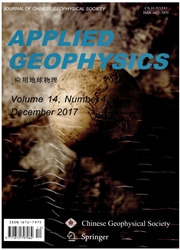

 中文摘要:
中文摘要:
当在无限的空间为波浪繁殖建模时,有马厩吸收边界有效地从截断边界消除假思考是必要的。嘘,为完美地匹配的层(PML ) 的波浪方程被推出,他们的 Crank-Nicolson 计划在这篇论文被介绍。我们使用第二 -- ,第六 -- ,并且计算空间衍生物的第十顺序的有限差别和伪 spectral 算法。有一个洞的二个数字模型,同类的各向同性的媒介和一个多层的模型,被设计调查吸收边界宽度和算法怎么决定 PML 效果。当吸收边界是薄的时,为 PML,低顺序的有限差别算法有相当好的吸收的数字结果表演完成,而,当边界是厚的时,高顺序的算法总是有好吸收。最后,我们讨论思考系数并且指出它的缺点,它是我们使用 SNR 到 PML 完成的份量上规模的原因。
 英文摘要:
英文摘要:
When modeling wave propagation in infinite space, it is necessary to have stable absorbing boundaries to effectively eliminate spurious reflections from the truncation boundaries. The SH wave equations for Perfectly Matched Layers (PML) are deduced and their Crank-Nicolson scheme are presented in this paper. We use the second-, sixth-, and tenth-order finite difference and pseudo-spectral algorithms to compute the spatial derivatives. Two numerical models, a homogeneous isotropic medium and a multi-layer model with a cave, are designed to investigate how the absorbing boundary width and the algorithms determine PML effects. Numerical results show that, for PML, the low-order finite difference algorithms have fairly good absorbing effects when the absorbing boundary is thin, whereas, high-order algorithms always have good absorption when the boundary is thick. Finally, we discuss the reflection coefficient and point out its shortcomings, which is why we use the SNR to quantitatively scale the PML effects,
 同期刊论文项目
同期刊论文项目
 同项目期刊论文
同项目期刊论文
 期刊信息
期刊信息
